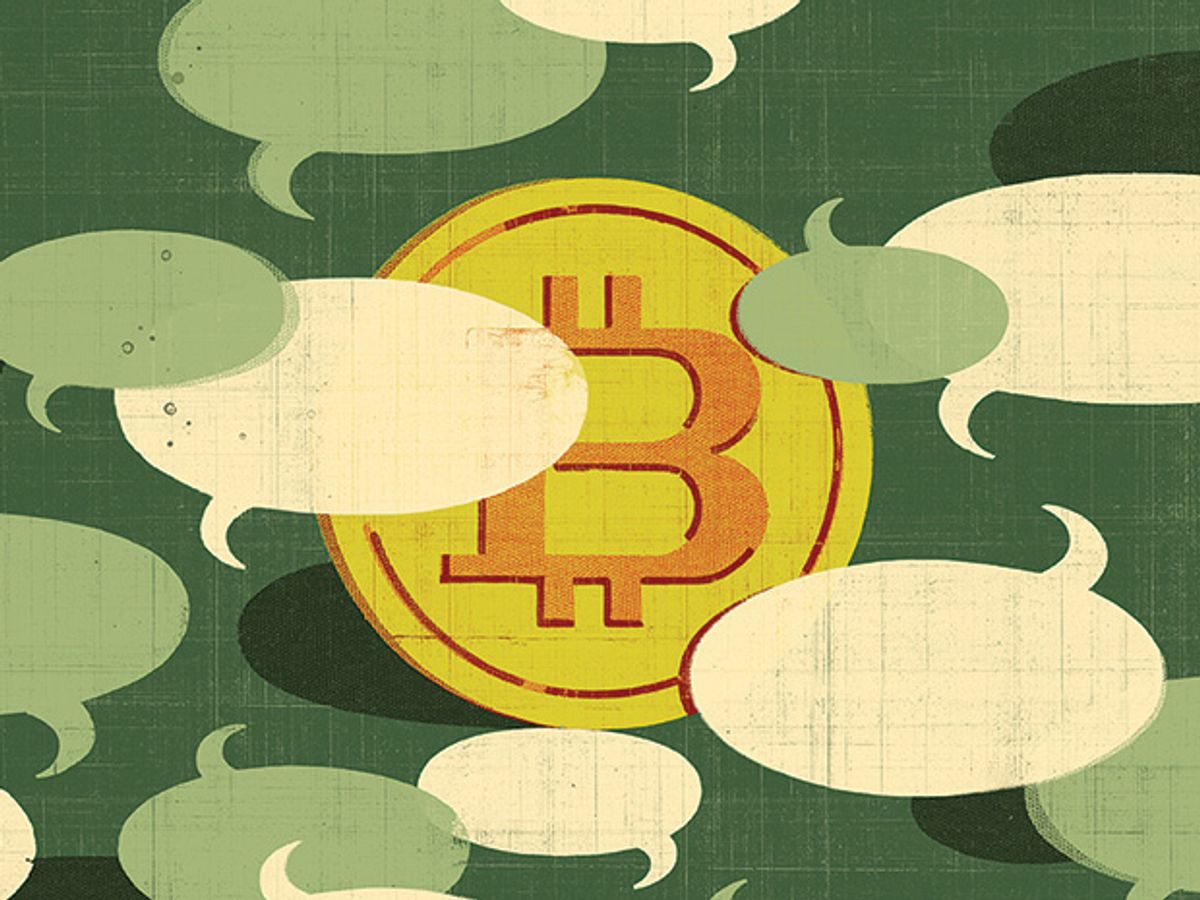What is needed is an electronic payment system...allowing any two willing parties to transact directly with each other without the need for a trusted third party.
—Satoshi Nakamoto, inventor of Bitcoin
Is Bitcoin destined to become the Facebook of money, or the Second Life? That is, will Bitcoin become universal, a medium of exchange used by just about everyone, or will it remain a curiosity, a tool used only by a dedicated fringe (in Bitcoin’s case, criminals and privacy extremists)? As a mere language columnist, I haven’t the foggiest, but I can tell you that, no matter what its fate, Bitcoin is generating new words and phrases at an inflationary rate. Is this profusion of new terms undermining (that’s a pun, as you’ll see) Bitcoin’s quest for universality?
The confusion begins at the beginning, with the simple act of categorization: What is Bitcoin, exactly? The person known as Satoshi Nakamoto, who invented Bitcoin back in 2008, called it electronic cash. Other terms in use are cryptocurrency, virtual currency, digital currency, digital cash, and math-based currency. (This last term reminds me of something the entrepreneur Chris Dixon posted to his Tumblr in 2013: “Three eras of currency: Commodity based, e.g. Gold; Politically based, e.g. Dollar; Math based, e.g. Bitcoin.”) Others are calling it MoIP (Money over Internet Protocol), a play on VoIP (Voice over Internet Protocol). The fact that many people are speculating in bitcoins has led some to categorize it as a cryptocommodity, and even a moneylike informational commodity.
We find more solid ground when we look at the Bitcoin system itself, which is best described as trustless. That is, instead of a trusted third party such as a bank brokering financial transactions, transactions occur peer-to-peer—directly between buyers and sellers—and are verified using well-known and well-tested methods of public-key cryptography, with some extra twists thrown in. The basic unit is the electronic coin, or bitcoin. (For the record, bitcoinage also comes in several smaller units, including the millibitcoin—0.001 bitcoins—the microbitcoin—0.000001 bitcoins—and the satoshi—0.000000001 bitcoins.) The important point is that all transactions are stored in a distributed database called the blockchain, an electronic ledger—sometimes called a consensus ledger or cryptoledger—that contains the complete history for all existing bitcoins (which are committed to the ledger periodically in groups called blocks, hence the name).
Everyone running the Bitcoin client software has a copy of the blockchain, and some clever cryptographic sleight of hand ensures that the ledger cannot be falsified or manipulated. This process involves generating a hash value for each block, which requires a nontrivial amount of computational work. Doing the required computations is called mining because once a user discovers a hash for a transaction block, she is given some bitcoins—called a block reward—as compensation for helping to maintain the system’s integrity and security.
As Bitcoin slouches toward the mainstream, it has generated a lot of new words, but will it generate enough users to supplant our current system of so-called fiat money? A few years ago, when the venture capitalist Paul Graham was asked if he thought Bitcoin would have a lasting impact, he said that it “has all the signs. Paradigm shift, hackers love it, yet it’s derided as a toy. Just like microcomputers.” The PC succeeded because it became indispensable, just as in the 21st century Facebook became indispensable. Second Life hasn’t passed that test, so we’ll see if Bitcoin manages the feat. It’s a long shot, but in an age characterized by the Snowden effect—the increased awareness of, and the desire to be protected from, government and corporate surveillance—Bitcoin’s hour may have come round at last.
This article originally appeared in print as “Bitcoinages.”
Paul McFedries is a technical and language writer with more than 40 books to his credit. He also runs Word Spy, a Web site and mailing list that tracks new words and phrases.



